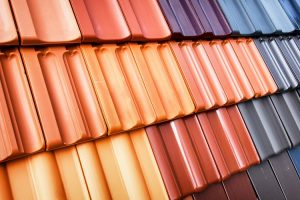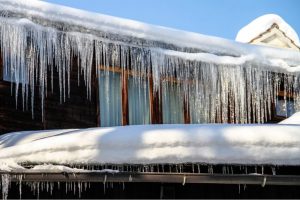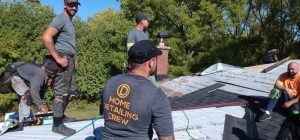Common Causes of Roof Leaks and what you should do about them
Jun 2, 2023

One of the most dreaded repair issues for many homeowners is a roof leak. Water is a roofing system’s worst enemy. It can easily find its way into your home through vulnerable structures like a clogged gutter, missing shingle or punctured layer on the roof. Once inside, the water can cause significant damage that extends far from the initial source, which makes it even harder to identify where the problem started.
A small, unnoticed drip in your home may not seem like a bother but it could be a sign of a water damage issue that is about to go out of control. Don’t think of small leaks in your home as a mere inconvenience. Ignoring early signs of water damage can force you to invest in new insulation, mold removal and cause damage to your interior walls and ceilings.
It’s really important to be on the lookout for roof leaks. Below are 10 things known to cause roof leaks and what you should do about them.
- Old roofing materials
All roofing materials are bound to get old and tired with time. When they do, you’ll start spending more and more on repairs. Over time, the roof is exposed to different temperatures, which causes the material to expand and contract. This eventually causes cracking. As the roof is exposed to sunlight, the harsh UV rays of the sun, the roofing material deteriorates and turns brittle. That’s why leaks are quite common when a roof is approaching the end of its life expectancy.
- A damaged chimney
Most chimneys are made of bricks which are bound together by mortar. Even though these chimneys can last for many years, the mortar can easily get eroded when exposed to harsh weather and water can seep through the joints. This can easily be fixed by applying patches on the joints to stop the leak.
- A compromised flashing
Flashing, which is usually made of metal, is applied on danger points on the roof to prevent leaks. For instance, flashing is used to join the roofing material and the chimney at a 90-degree angle. If it’s not properly sealed, water can easily seep through. Another issue with flashing is poor installation. It must remain in place in order to avoid rusting or cracking.
- Missing shingles
Roof shingles must be replaced immediately they go missing. Replacing shingles is an easy and one-time task. You just need to remove the nails from the course below and then slide down the new shingle until it fits perfectly in shape. After that, you can nail the new flashing to secure it properly on the roof. Once you replace the missing shingle, you may notice a slight difference in colour. This is because the old shingles have weathered over time.
- Faulty vent boot
The vent boot is that section of the roof that slides over the plastic vent pipes which protrude from the roof. The vent boot helps to prevent water from getting into the junction of the roof and pipe. Vent boots are made of plastic, metal, rubber among other materials. A damaged vent boot can be easily removed and a new one installed.
- Holes in the roof
Roofs can get punctured due to many reasons. It could be as a result of storm damage or animal damage. Your roof may have tiny holes, which were made by misplaced nails. These holes can go unnoticed until an inspection is done and they are uncovered. The best way to fix these holes is by applying some flashing under the shingles instead of just caulking it.
- Poor sealing
This is often a reason for roof leaks in homes with complex roof architecture. Your home’s roof may look stunning with valleys and slopes. However, these unique features are more difficult to seal and can cause serious water damage issues. It’s important to choose your roof’s architecture carefully to ensure it doesn’t become too costly to maintain.
- Ice dams when it snows
Whenever it snows, your roofing may be compromised in many ways. Snow can pile on the roof especially if it wasn’t designed to slide off the top of the home. This ice dam exerts excessive weight on a roof and promotes seepage of water through the shingles. Fixing this issue can cause your roof to be more energy efficient. Choose the best roofing material such as metal roofing or metal ice belts to prevent issues related to ice dams.
- Clogged gutters
Gutters often become clogged, and some break, when routine maintenance isn’t done. Gutter cleaning is such an easy task that can prevent you from costly water leaks. Gutters are designed to ensure that water travels away from the foundation of the roof. Gutter cleaning, when professionally done, will get rid of debris and keep water flowing consistently away from your roof.
- Poorly fitted or damaged skylights
Skylights are quite important and they can instantly transform the room in which they are installed. The only drawback is that, if the skylights are not properly fitted, leaks can sprout down through them and into the building. Worn out rubber seal, that’s used in the skylights, can also contribute to water damage. It’s important to be on the lookout for cracks on the sides of the skylight. Ensure that they are installed at the proper pitch. If you notice cracks on these areas, call a professional roofing contractor to fix them and apply new flashing or shingles where necessary.
Moisture problems don’t have to force you to replace your entire roof. If noticed early enough, moisture damage can be prevented. Ensure that your roof is inspected as recommended by an expert roofer in order to keep leaks at bay. If you notice a small leak from any area of your roof, don’t ignore it. Ignoring it doesn’t make it go away. Hire a roofing contractor you can trust to uncover the underlying issue and offer a reliable fix.[/et_pb_text][/et_pb_column][/et_pb_row][/et_pb_section]





